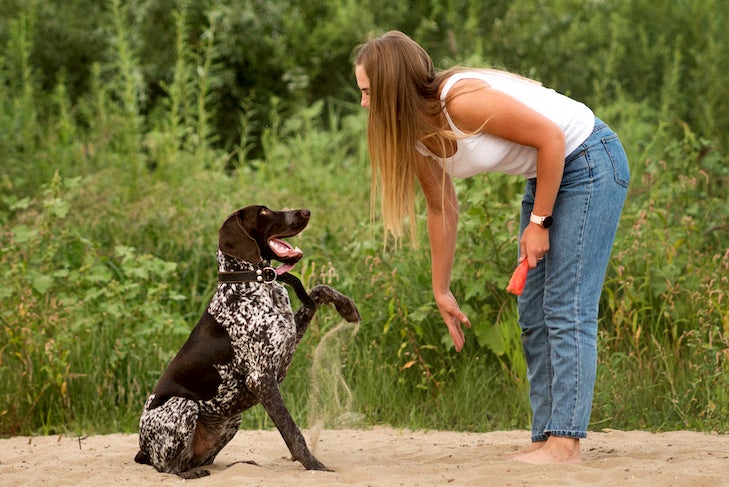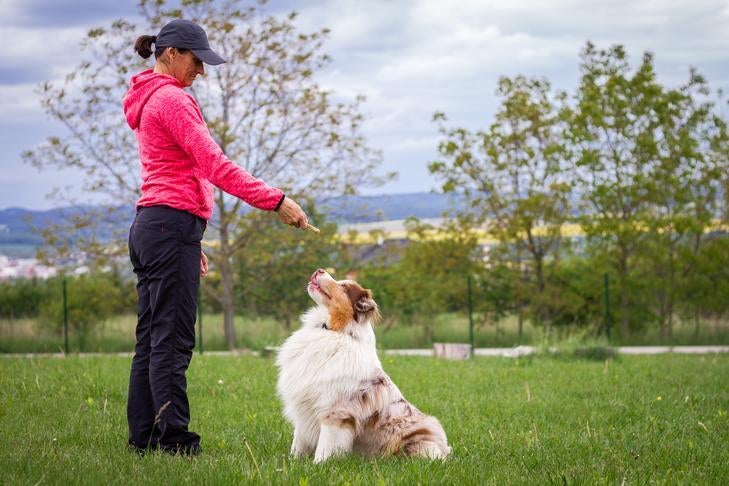Common Mistakes to Avoid During Dog Training for Better Results
Transform Your Canine's Behavior With Proven Training Approaches
Transforming your dog's behavior requires a nuanced understanding of their individual characteristics and needs, in addition to the application of tested training techniques. By utilizing favorable reinforcement and acknowledging important cues in their body language, you can successfully resolve usual behavioral issues such as extreme leaping or barking. Uniformity in your training technique not only enhances obedience however also fosters a deeper bond of trust fund and regard between you and your family pet. Nevertheless, the course to effective transformation may present unforeseen challenges that warrant more exploration.
Understanding Pet Actions
Comprehending pet dog actions is important for reliable training and interaction between humans and their canine buddies. Pet dogs, as social pets, exhibit a variety of habits affected by genes, environment, and experiences - Dog training. Acknowledging these actions helps owners customize their training approaches to satisfy the specific demands of their canines
Trick facets of dog actions consist of body language, vocalizations, and social interactions. For instance, a wagging tail usually indicates excitement, while a lowered head may signal submission or anxiety. Recognizing these signals can aid proprietors analyze their dog's mood and respond suitably. In addition, socialization plays a vital duty fit habits; dogs that communicate favorably with numerous individuals and other animals are normally extra well-adjusted and versatile.
Furthermore, acknowledging stress and anxiety signals-- such as pacing, panting, or evasion behaviors-- can stop rise right into a lot more severe problems. Owners who are attuned to their dog's actions can develop a secure and nurturing setting, fostering trust fund and improving the training procedure. Ultimately, a deep understanding of canine habits lays the foundation for a harmonious partnership and efficient training results, ensuring both pet dogs and their owners thrive with each other.
Positive Support Strategies
Favorable reinforcement strategies are commonly recognized as one of one of the most efficient techniques for training dogs, cultivating a positive knowing setting. This method involves gratifying preferred actions with deals with, praise, or play, therefore encouraging the dog to repeat those habits. Unlike vindictive techniques, favorable support builds trust and enhances the bond between the fitness instructor and the dog.
Incentives need to be offered quickly following the desired behavior to help the pet dog make the connection. Consistency is also necessary; utilizing the exact same commands and benefits aids the pet understand what is expected.
It is very important to note that positive reinforcement is not concerning bribery; instead, it is concerning reinforcing good behavior. In time, as the canine learns to associate specific actions with positive outcomes, the regularity of incentives can be progressively lowered, transitioning to spoken appreciation or recurring benefits. This technique not only encourages obedience but also promotes a certain and delighted pet dog, making training a much more delightful experience for both parties entailed.
Addressing Usual Problems
Dealing with common issues throughout dog training is important for guaranteeing a successful and unified connection in between the pet and its proprietor. Several pet proprietors experience behavioral obstacles, such as extreme barking, jumping, and chain drawing. Comprehending the source of these behaviors is crucial for reliable training.
To reduce this, give ample physical exercise, mental excitement, and opportunities for social browse around this web-site communication with both human beings and other pet dogs. Educating the canine to rest upon greeting can redirect this actions positively.
Leash drawing is an additional prevalent issue, often arising from a dog's passion to discover. Utilizing appropriate chain handling methods, integrated with training methods that urge loose-leash strolling, can considerably boost this actions.
In addition, issues like resource safeguarding or separation stress and anxiety need customized strategies. Gradual desensitization and counter-conditioning can be effective in attending to these challenges. By acknowledging and proactively managing these common problems, pet dog proprietors can cultivate an extra pleasurable training experience and enhance the bond with their canine buddies.
Uniformity in Training

To attain uniformity, it is vital that all participants of the home abide by the very same training techniques. For example, utilizing the why not look here same spoken cues and hand signals makes certain that the pet dog receives consistent messages. Furthermore, the timing of rewards and adjustments should be regular; instant reinforcement enhances the chance that the canine will certainly associate the actions with the outcome.
Furthermore, developing a routine can further improve uniformity. Routine technique sessions, paired with structured timetables for feeding, strolling, and play, help canines prepare for and comprehend their atmosphere, making them much more responsive to training. Ultimately, consistency promotes a complacency and trust fund, empowering pet dogs to find out more effectively. By committing to an organized approach, fitness instructors can promote positive behavior modifications and grow a courteous friend.
Building a Solid Bond
Just how can cultivating a solid bond in between a pet dog and its owner improve the training experience? A solid relationship developed on count on and respect acts as the structure for reliable training. When a dog really feels safe and secure in its link with its proprietor, it is most likely to display positive behaviors and be responsive to finding out. This bond motivates the canine to engage totally in training sessions, as it checks out the owner as a source of advice and assistance.
In addition, a solid bond helps with better interaction. Dogs are experienced at checking out human cues, and a relying on connection permits clearer signals throughout training. Proprietors who invest time in building this bond with play, socialization, and favorable reinforcement develop a setting where canines really feel inspired and anxious to discover.
In addition, a well-established connection can reduce stress and anxiety and behavior problems, as pets are less most likely to act out when they feel recognized and cared for. Prioritizing the advancement of a solid bond not only improves the training experience but also adds to a happier and a lot more well-adjusted pet. Ultimately, the trip of training changes into a collective collaboration, resulting in lasting behavior renovations.
Conclusion

Owners that are attuned to their pet's actions can develop a secure and nurturing environment, fostering trust and boosting the training procedure. Eventually, a deep understanding of canine habits lays the foundation for a harmonious connection and efficient training outcomes, ensuring both dogs his comment is here and their owners thrive with each other.
Attending to typical problems throughout pet dog training is important for ensuring a effective and unified partnership in between the pet dog and its owner.Consistency is a cornerstone of reliable canine training, as it establishes a clear structure for the pet dog to recognize behaviors and assumptions.In final thought, changing a canine's actions with shown training techniques requires an understanding of canine habits, the application of favorable reinforcement strategies, and an emphasis on consistency.